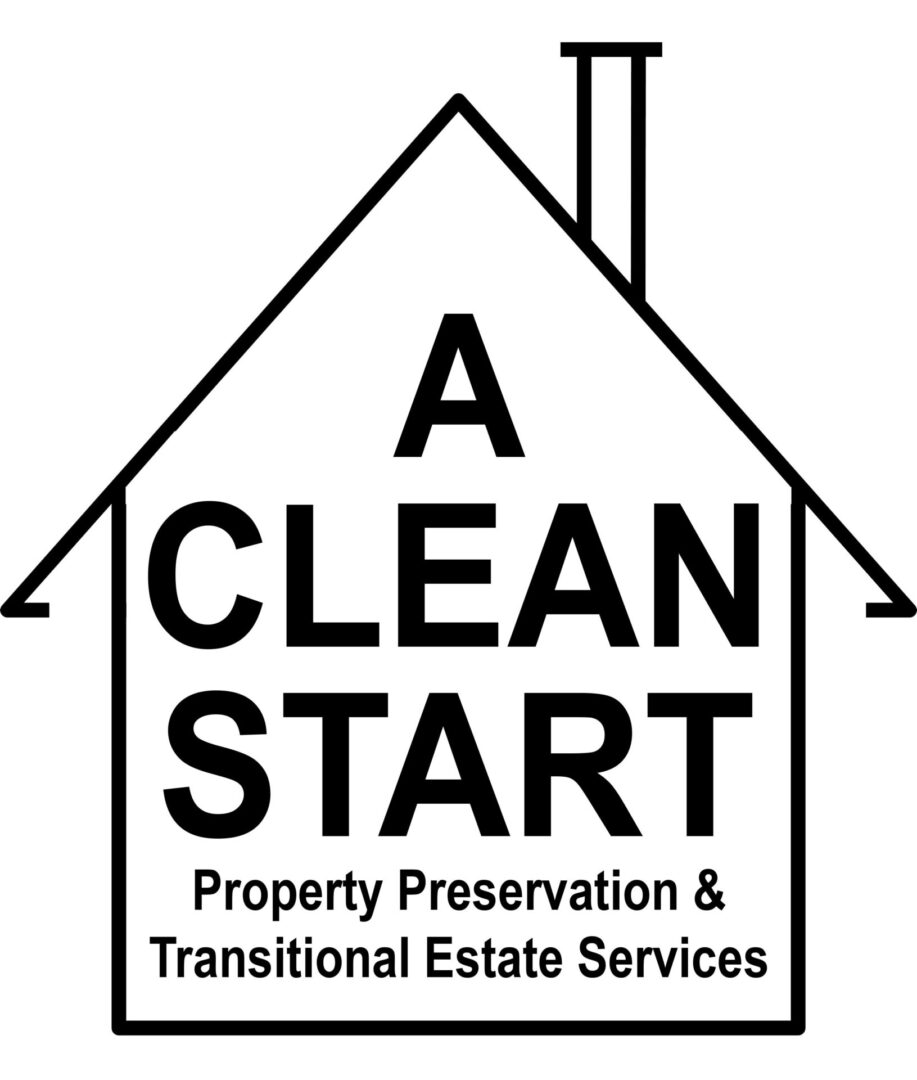1. Preparing for the Move: Organizational Tips
When it comes to real estate moving, a little preparation goes a long way to ensure a smooth transition. From crafting the ideal moving checklist, to packaging effectively, precision and organization are fundamental in every step of the process. This section, ‘Preparing for the Move: Organizational Tips’, deftly navigates the intricate web of planning and organizing, promising to be your ultimate guide in unraveling an otherwise overwhelming realm of real estate moving. Whether you are a first-time mover or a seasoned one, our expert advice will make the challenge of moving more manageable, helping you turn chaos into coordination. Let’s nudge away the complexities of real estate moving and embrace a refined approach to relocating.
1.1 Creating a Real Estate Moving Checklist
The essence of every successful real estate moving process lies in the creation of a thorough and well-thought-out checklist. Having a blueprint of your real estate moving planning can make the entire process less stressful and more manageable. Much like a compass guiding a sailor, a real estate moving checklist ensures you keep track of every important task, from the smallest details to the most significant actions. This orderly step-by-step roadmap paves the way for an organized, smooth transition in your real estate moving journey.
To begin creating a real estate moving checklist, it is important to start with an inventory of every item you have in your property. The inventory serves as a foundation in identifying what needs to be packed, sold, donated, or disposed of. It’s not a rapid task, requiring careful evaluation, and it’s therefore advised to begin well ahead of the scheduled move. During the inventory, you might find items you no longer need. Such discoveries present an excellent opportunity for a yard sale or donation, making for a win-win — decluttering your property while also making some cash or helping others.
Apart from inventorying, another fundamental item in your checklist would be sourcing for a reputable moving company. Entrusting your valuable items to professionals proficient in transitional real estate services makes for convenient and efficient real estate moving. Remember to book their services ahead of time to avoid the rush and last-minute disappointments that are common during peak moving seasons. Lastly, avoid getting overwhelmed by breaking down your checklist into small manageable tasks tackled daily. This strategy ensures you stay on track without feeling the pressure of ticking everything off the list at once.
1.2 Packaging Materials: What You Need
When it comes to real estate moving, having the right packaging materials on hand is a crucial first step. Boxes, bubble wraps, and tape are among the typical necessities. However, the kind of items you’ll be moving often determine what specific materials you’ll need. If you’re moving delicate objects like china, extra bubble wrap and packing peanuts can provide much-needed cushioning. On the other hand, bulky items may require robust and sturdy boxes to hold their weight. Remember, gauging the packaging materials needed based on what you’re moving is a smart strategy to avoid wastage and optimize utilization of resources.
Quality also plays a significant role when considering packaging materials for real estate moving. Sturdy boxes can protect your fragile items from potential damage during transit. Investing in strong packing tape will ensure your boxes remain sealed and secure. Meanwhile, specialty moving supplies, such as mattress covers, can protect your large items against dirt and damage. It’s worth noting that good quality packaging materials not only secure your belongings but can also save you from possible losses due to damage. Check out some of our helpful tips for packaging on our blog.
Lastly, labeling your boxes smartly will make the process of unpacking and settling down at your new home a lot smoother. Using a clear and precise labeling system will help movers know where to place the boxes at the new location. Not only does this save time, but it also reduces the chances of misplacing items. Real estate moving can surely be a daunting task, but with the right planning and organization, it can be made significantly more manageable.
1.3 Sorting Out Essentials for the Moving Day
Moving day in the world of real estate transactions can either be a daunting task or a seamless transition – the difference lies in preparation. One essential preparation measure involves sorting out the must-haves for the moving day. Remember, your belongings might take a while to reach your new home. Thus, it’s vital to identify and pack items that are essential for the first few days or weeks.
Start by creating a prioritized ‘First Day Box’. This box should contain necessities like toiletries, a change of clothes, important documentation, appliances for daily use, cooking supplies, and perhaps some entertaining items like books or games to help ease the stress of moving. Don’t forget to include essentials for every member of the family, including pets. This level of organization can significantly simplify the real estate moving process and minimize the potential for frustration.
It’s also crucial to have a clear understanding of your new home’s layout. This can help you foresee potential challenges. For instance, if the new home is smaller, clearing out unused household items before moving will ensure a smooth transition. Similarly, larger properties may require additional furniture, so planning purchases accordingly will save you the stress of rushing or buying unneeded items.
Moving to a new property is a notable milestone in anyone’s life. It represents a fresh start, and the transition should be less about the hassle of moving and more focused on the thrill of experiencing a new environment. With the right preparations, real estate moving can indeed be an exciting adventure. For more tips on mastering home transitions, check out our blog post on Top Strategies for Smooth Property Changeovers in 2024.
2. Key Aspects to Consider in Your New Real Estate Location
In the whirlwind activity that encompasses real estate moving, choosing your new location is perhaps the most pivotal decision. In our next section, “Key Aspects to Consider in Your New Real Estate Location”, we delve into vital aspects that could make or break your transition. Be it exploring the unique dynamics of your future neighborhood or arranging home services and utilities, precise planning is an absolute necessity. These carefully charted steps will help you seamlessly transition into your new abode, bringing you one step closer to transforming a house into your new home.
2.1 Understanding Your New Neighborhood
When it comes to real estate moving, understanding your new neighborhood can not only ease the moving process but also contribute to the improvement of your overall lifestyle. Taking the time to get to know your soon-to-be environment can make the transition to your new home smoother, less stressful, and more exciting. An essential aspect of this process includes considering the amenities, community features, and even the neighborhood vibe.
Exploring your new surroundings before you complete your real estate moving venture is indeed a beneficial action. You may want to check whether local amenities like shops, restaurants, schools, and recreational facilities are within accessible distance. Other fundamental factors include crime rates, average household incomes, community services, and even the neighborhood’s general ambiance. To further assist with your moving process, check out our guide on Mastering Home Transition: Top Strategies for Smooth Property Changeovers in 2024.
One should not disregard the importance of these factors in influencing their everyday lives. For instance, living in a safe, vibrant community can significantly enhance the quality of life and facilitate better connections within the community. With this in mind, effectively understanding your new neighborhood as part of your real estate moving plan lets you step into a more fulfilling and gratifying lifestyle at your new location.
Moreover, understanding the overall environment and local demographic of your new real estate location will help you anticipate any lifestyle adjustments needed. From economic factors like taxes and cost of living to social aspects like local culture and events, each element contributes to making your new house a home. Remember, real estate moving is more than just a physical transition; it is a lifestyle change.
2.2 Arranging Home Services and Utilities
As part of any successful real estate moving endeavor, arrangements for home services and utilities are paramount. This is not just about transferring your cable subscription or switching on the electricity. It goes deeper, involving a careful assessment of the specific services that you’ll need to have a smooth transition into your new home and community. This process can be intricate, but with the right approach, you can efficiently manage these services, aligning them with your new lifestyle and preferences.
Your new location might have a range of service providers different from what you’re used to. For instance, one location might experience more regular power outages, requiring you to have a reliable and proactive energy provider. Or perhaps your new neighborhood is full of lush greenery, meaning you’ll require frequent property preservation services. Understanding these peculiarities and planning for them is key to gaining peace of mind as you embark on the journey of real estate moving. Keep in mind that the sooner you begin this research and make the necessary arrangements, the less you’ll have to worry as moving day draws closer.
Next, remember to handle the necessary transitions in utilities. This may involve reaching out to existing providers to terminate or transfer services and alerting new utility companies about start dates. This can include gas, electricity, water, internet, and cable services. Regular communication with your service providers before, during, and after your move can help ensure a successful, hassle-free real estate moving process.
Lastly, embrace the opportunity to declutter. Moving to a new location is a fresh start, so consider what services are truly essential for your new home. With some thoughtful preparation, you can ensure that your utilities and services support your new life, rather than complicating it. Keep the focus on creating a clean, comfortable space that reflects your lifestyle and values, finding service providers who can support this vision.
2.3 Making Your New House Feel Like Home
Real estate moving can be a daunting process, especially when the excitement of securing a new home is tinged with the unfamiliarity and discomfort of leaving a known environment. However, making your new house feel like a home doesn’t need to be an overwhelming task. With a few strategic decisions, you can effortlessly transform the environment of a new property to reflect your personality and satisfy your comfort needs.
Start with adding personal touches. Display cherished photographs, favorite artwork, or memorabilia from travels on your walls. Items that remind you of fond memories and achievements will help create a sense of personal connection with your new space. Position your furniture to suit your comfort and circulate them around the house until you find the right choreography. And while it might be tempting to recreate the exact layout of your previous home, try to embrace the new space and its unique features. The goal is to achieve a balance between the familiar and the new, the home you’ve moved from and the one you’re now inhabiting.
Another important aspect to consider is scent. Familiar smells can make a place feel like home. Use your favorite candles, essential oils, or incense to establish a comforting and personal atmosphere. These sensory triggers can drastically alter how we perceive our surroundings. It might also be helpful to maintain similar daily routines to those you had at your old home. This will offer a sense of continuity that can be psychologically reassuring. For tips and advice on transitioning smoothly, you may refer to the blog posts on our website Mastering Home Transition: Top Strategies for Smooth Property Changeovers in 2024, which details different strategies to make transitioning during real estate moving easier.
You also need to consider an often overlooked aspect which is light. The right lighting can truly make a space feel like a home. Whether it’s implementing warm, inviting lights or making the most of natural light, this can drastically impact the overall ambiance of your home.
| Aspects | Recommendations |
|---|---|
| Personal Touches | Add personalized items such as family photos, art pieces, and souvenirs from travels to add a sense of comfort and familiarity. |
| Scent | Deploy the power of scent. Use familiar fragrances via candles, essential oils or incense to create a comfortable atmosphere. |
| Daily Routine | Try to maintain a routine similar to your old home for continuity. This could be having meals at the same time or doing certain activities in a designated space. |
| Lightening | Optimize your use of light, both natural and artificial, to create the right atmosphere and bring vibrancy into your home. |
3. Real Estate Moving: Hiring the Right Moving Company
Real estate moving involves much more than just transporting belongings from one location to another. At the center of a successful moving experience is the crucial decision to hire the right moving company. This section examines the key factors to consider when embarking on your real estate moving journey. We delve into practical strategies for evaluating potential movers, highlighting the significance of understanding your moving contract, and finally, the need for considering adequate insurance coverage for your precious items during the move. Thus, ensuring that your real estate moving adventure is handled professionally, resulting in less stress and more joy in this significant life-changing event.
3.1 Evaluating Potential Moving Companies
When it comes to real estate moving, choosing the right moving company can make all the difference. This decision is crucial as it will significantly impact the ease and efficiency of your transition to a new home. The right movers will understand the unique challenges and demands associated with real estate moving and offer solutions tailored to your specific needs.
To evaluate potential moving companies, the first step is to ensure they are reputable and legitimate. This can be determined by researching online reviews and testimonials, as well as checking whether the company is licensed and insured. Furthermore, a trustworthy moving company should offer transparent pricing and detailed quotes without any hidden charges. You should feel comfortable and confident in your interactions with the company’s representatives, as strong communication is essential for a smooth relocation process.
Another vital factor to consider is the range of services provided by the moving company. Some companies specialize in local moves, while others can handle long-distance or international relocations. Check if the company provides services like packing, storage, and furniture disassembly and reassembly. Remember that a moving company’s services should align with your individual moving needs, offering a comprehensive, stress-free moving experience.
Lastly, consider the company’s experience in handling real estate moves. A company with vast experience in real estate moving will understand the intricacies of transporting household possessions safely and efficiently. They will have a comprehensive understanding of best packing practices, furniture handling, and even special care for antique or valuable items. For an effortless real estate moving experience, consider enlisting professional help from experienced movers like A Clean Start.
3.2 The Moving Contract: What You Need to Know
In the business of real estate moving, the contract you sign with your hired moving company is an essential document that guides the entire process. Essentially, it outlines the terms and conditions for moving, payment, and responsibilities of both parties. Therefore, understanding every part of the moving contract is crucial to ensure that your real estate moving experience goes smoothly.
Firstly, it is important that your contract be clear and concise, detailing the primary services the moving company will provide. This could range from packing, transporting, to unpacking your belongings at the new location. Make sure all these services are accurately defined and agreed on in the contract.
Another significant aspect of the moving contract is the payment details. It should clearly state the total cost, payment method, and any additional charges that may arise. This includes scenarios like an extra fee for handling delicate or heavy items, or charges in the event of delays. By understanding these factors in your moving contract, you will prevent unexpected surprises on the moving day and guarantee a seamless real estate moving experience.
Additionally, the contract should include an inventory list of all your items that will be moved. This serves as a double check for both you and the company to ensure no items are lost during the transition. Be sure to verify the inventory list, agree on the condition of your belongings before and after the move, and note this down in the contract.
Finally, the contract should spell out the insurance cover provided in case of loss or damage during the move. Different moving companies offer different coverage options, so choose one that best suits your needs. Remember, understanding and negotiating your moving contract before signing can save you a lot of headache, ensuring your real estate moving process remains as stress-free as possible.
3.3 Insuring Your Items During the Move
When dealing with real estate moving, securing your belongings is as crucial as ensuring that they arrive to the new address intact. One essential method of security comes when insuring your items during the move. Engaging with a moving company that offers adequate insurance coverage provides peace of mind, knowing that should anything unexpected happen during transport, the financial impact on your side would be minimal. Considering the unpredictability of relocating and potential property loss or damage, it’s advisable to choose a moving service provider that has robust insurance policies in place.
Several types of insurance exist for this exact purpose. For instance, Full-Value Protection insurance typically provides the most comprehensive coverage. This plan will cover the cost to repair, replace, or pay cash value for items lost or damaged during the move. Another option to consider is Released-Value Protection, a more economical alternative; however, it provides only minimal protection based on the weight of your items, not their actual value. Prior to embarking on the real estate moving process, sit down with your chosen moving company, and comprehensively discuss the types of insurance they offer. Such conversation is key to understanding what each plan covers and subsequently making an informed decision.
A little research can also go a long way. Review customer testimonials, seek recommendations from trusted sources, and delve into the moving company’s reputation. Ensure they are renowned for their reliability, professionalism, and transparency regarding their services. Remember, when it comes to real estate moving, insurance is not a luxury, but a necessity. This peace of mind is what our team at A Clean Start strives to provide continuously. We understand the importance of securing your belongings during this transformative period, and we’re here to ease the transition as much as possible.
4. Post-Move Tips: Settling in Your New Real Estate Property
As we delve deeper into the world of real estate moving, it’s imperative to consider the post-move phase. Settling into your new property can be exciting yet daunting. However, with the right strategies in place, turning your new house into a home can be a smooth process. From strategic unpacking plans to ensuring you’re effectively connected to your new community, there’s a plethora of aspects to consider. Whether you’ve recently moved, or real estate moving is on the horizon, this section will provide you with invaluable tips to streamline your transition into your new home. Stay tuned to unlock the keys to a successful settling process after your real estate move.
4.1 Unpacking Strategies for a Smooth Transition
Moving into a new real estate property often feels like starting a new chapter in life. It’s thrilling, filled with possibilities, but can also be overwhelming. For some, the overwhelming part majorly revolves around unpacking – it can feel like you are buried under an avalanche of boxes! Fear not, here are effective unpacking strategies for a smooth transition to make your real estate moving experience a breeze.
First and foremost, it is critical not to rush the unpacking process. Although it’s natural to want your new home to feel homely quickly, unpacking is not a marathon. Lay out a practical plan that spreads the process over several days or even weeks, if needed. Allocate different days to different rooms; for example, one day for the kitchen, the next for the bedrooms, and so on. This tactic ensures you can unpack and organize effectively without feeling rushed or overwhelmed.
Next, be strategic about which boxes you open first. Some items will naturally be more immediately necessary – things like toiletries, clothes for the next few days, chargers, and basic kitchen items. Make sure you’ve marked these boxes appropriately to find them quickly. Also, remember that it’s okay to ask for help. Whether from friends, family, or professional movers, don’t hesitate to delegate tasks or seek assistance when you need it.
Finally, don’t forget to make your new real estate property feel like home. Unpacking doesn’t just mean getting items out of boxes. It means arranging your space to your liking, hanging pictures, putting up decorations, and adding those personal touches that give your real estate property a sense of personal ownership and comfort. For ideas on how to create a seamless home transition, check out this helpful post on our blog about Mastering Home Transition: Top Strategies for Smooth Property Changeovers in 2024.
4.2 Address Change: Necessary Steps
Moving into new real estate property can be an exciting yet complex journey. One critical step overlooked by many in a real estate moving process is the address change. It’s about more than just sharing your new residential coordinates with loved ones. It’s crucial to take the appropriate steps to ensure a seamless transition and prevent any future inconveniences.
Start planning your address change well in advance, ideally two weeks before your move. Begin by updating your new address with the post office. This transition is paramount as it ensures that your letters and packages are delivered to your new location. Also, important documents such as tax information, credit card or bank statements, will also follow you to your new address.
Remember, not only the federal agencies like IRS and Social Security need an update, but also your state’s driver’s licensing agency. Inform your employer, banks, and insurance providers. Don’t forget about subscriptions and memberships. Your goal should be to ensure that every entity which sends you mail knows your new address.
Online retailers should be updated too, especially if you’re in the middle of a real estate moving. Servicing companies, such as those for your utility services, need to be informed to prevent termination of your services. Your health providers and various insurance companies (health, home, car etc.) need a heads-up, as well. Mistakes do happen, and the last thing you want is an urgent document sent to your old address.
Lastly, set up a moving announcement. This could be a fun email blast, quirky postcard, or even just a quick message to your friends and family. Let them know you’ve moved and invite them to see your new place. After going through the grueling real estate moving process, it’s nice to take a break and celebrate the successful transition. So take a moment to admire how far you’ve come and begin embracing your new beginning.
4.3 Connecting with Your New Community
Many people find the post-move phase of real estate moving just as challenging as the actual move— if not more so. After transferring your belongings and settling into your new abode, the next major step is integrating into your new community. Establishing bonds with your new community can ease the transition, helping you feel settled and at home faster. Plus, developing local connections can provide invaluable assistance, from recommendations for the best local services to lending a helping hand in times of need.
Start with friendly gestures, such as introducing yourself to your immediate neighbors. You can also explore local community spaces, like parks, sports clubs, libraries, or community centres. These public spaces not only provide activities that can help relieve stress, but they’re also ideal places for meeting new people. Don’t hesitant to join local groups or clubs that align with your interests. This tip is particularily beneficial for individuals who have relocated to a totally different locale as part of their transitional real estate moving process.
Besides this, make an effort to learn about the local culture and customs. If you have moved to a new city or country, this step can be essential in establishing a sense of belonging. Take advantage of neighborhood festivals or community events. These are excellent opportunities to mingle with locals and understand the spirit of your new community. Providing a helping hand in community events and volunteering activities are also great ways to connect on a deeper level.
Keep in mind that integrating into a new community after real estate moving is not an overnight process. It takes time and patience. During the initial days, you might feel like an outsider trying to fit into a new world. But with persistent socialising efforts and an open-minded attitude, you will gradually settle into your new surroundings and feel at home.










